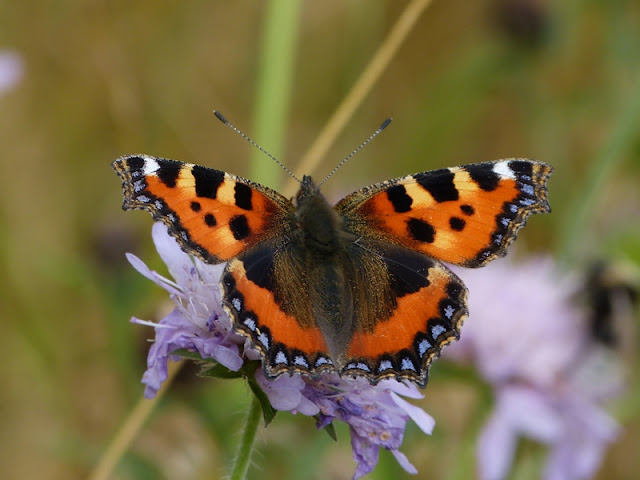For the last few years I have been coordinating the butterfly records from the Countryside Rangers and volunteers in East Lothian and then sending them in to Butterfly Conservation. 2020 was a very unusual year in more ways than one. The coronavirus, weather and my move to the Scottish Borders all impacted on butterfly recording.
After a reasonably mild, but wet winter the weather was wonderful from March until June. Coupled with the good summer of 2019 this resulted in a few early records, such as Small Coppers being seen on the coast near Dunbar on 7th April, the earliest record in Scotland.
Unfortunately in early June we had some very heavy showers and the wet and cloudy weather persisted for much of the rest of the year. I am sure the poor weather later in the summer impacted on the number of butterflies we saw.
The transects took a real hit, though, as it wasn't possible for people to travel in order to undertake these surveys. Only the John Muir Country Park transect was walked all season and two other transects were walked from July until September. There are normally nine transects regularly walked in East Lothian.
But, thanks to everyone's efforts we received 1,858 ad hoc records of butterflies in 2020, a bit down on the average of 2,200, but much better than it could have been. The number of butterflies recorded varies year on year, but has averaged about 13,000 over the last few years. In 2020 we only recorded 5007 butterflies. Undoubtedly the lack of transect records has contributed to this, but some species didn't appear to do very well last year, particularly those that we normally see in good numbers after June.
The spring populations of Large Whites and Small Whites, appeared to do well, but the summer generations were smaller than we are used to seeing. This appeared to correspond with the weather conditions during each generation. The ever-reliable Green-veined Whites, though, did well throughout the year.
The big story of 2020 was Holly Blues. For the last few years we have received one, or occasionally two, records of a Holly Blue in East Lothian. These records have usually been from a 5 kilometre stretch of the coast, leaving us to suspect that there was an undiscovered colony in a large garden or other secluded location in the area. Then in 2019 two colonies were discovered in the village of Gullane, right in the middle of that area.
In contrast, Small Tortoiseshells had a really good year, which is good to see. There is quite a lot of national concern because their numbers have been declining over the last few years. Let’s hope this is the start of a renaissance for the species.
It was great seeing Wall Browns continuing to do well. It is ten years since they were first recorded in East Lothian and they can now be found almost anywhere in the county.
I didn't receive any records of Northern Brown Argus in 2020. I am only aware of four colonies and three of those are not in places that people would have been able to visit during lockdown. There is a colony on a coastal golf course, where I only saw one Northern Brown Argus in 2019. I hope that they are still there and just weren't spotted by people walking past.
We had 23 species of butterflies recorded in 2020 in East Lothian, which is fantastic given the restrictions we were all under.

















